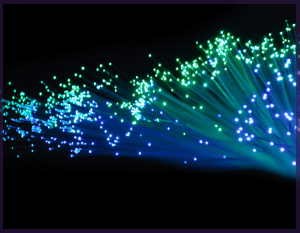Fiber optics: where does it come from?
Many of you took advantage of the warm weather to go for a dip in the Atlantic. The waves, the sand and the sun, what better way to detach you from the fast and stressful life that is our trendy society! Let’s leave our high-speed internet service and this incessant data sharing in town, but … are you sure? You may not realize it, but while you’re busy splashing around in salt water, 99% of intercontinental communications were flowing under your feet … yes, yes, in the seabed!
Optical fiber: its history
A little over 150 years ago, in 1866, the first submarine data cable was installed. It was then a copper cable that connected Ireland to Newfoundland and was used exclusively to send telegrams in Morse code. Although it was an avant-garde technology at the time, it could take up to an hour to travel from one continent to another. We were so far from today’s Internet communications!
Over the years, the network of submarine cables has grown! Since 1988, optical fiber has been used to make overseas communications even faster. The first transatlantic fiber optic cable, the TAT-8, contained 2 pairs of optical fiber, which equates to about 40,000 telephone circuits. It is with the rise of optical fiber that internet providers have had the opportunity to offer a quality internet service.

At present, nearly 300 different copper, coaxial and optical fiber cables, submarines cross the oceans, thus connecting the Internet to the entire world! These cables, which are usually about 7 cm in diameter and weigh about 10 kg per meter, are installed by cable ships that bury them in the seabed, well away from boats and animals. Despite all precautions, the network may be damaged by boats and animals, but also underwater avalanches, volcanic eruptions or voluntarily, in wartime for example. It is then the cable ships that repair the precious cable.
Optical fiber: nowadays
In September 2017, Facebook and Microsoft broke records by installing, in just 5 months, a transatlantic fiber optic cable of more than 6000 kilometers at a depth of 5000 meters. This cable, named Marea, will be used to connect Virginia (United States) to Bilbao (Spain) and can transmit a bandwidth of 160 terabytes! With all this bandwidth, it is no longer illusory to have unlimited internet for a residential service.
The seabed holds treasures of nature never before seen, but they also protect millions of important communications, from grandchildren’s birthday wishes to ultra-secret war messages!
Consult our internet packages or television offered in fiber optics!



